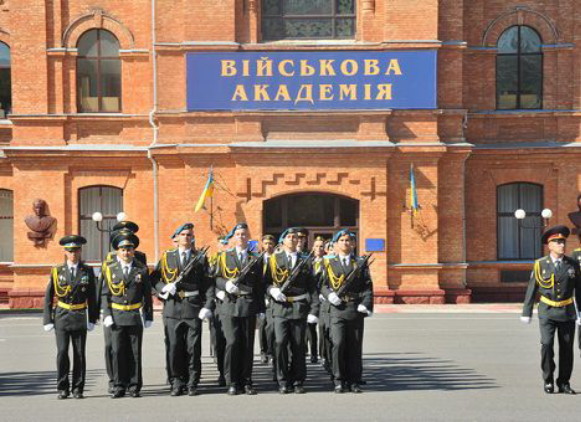Military education
Military education. From the Middle Ages to the Cossack period young men in Ukraine received practical military training at the courts of princes and nobles or at the Zaporozhian Sich. A young Cossack (see Cossacks) served as a novice for three years before he received full status. In the late 18th century the nobility of the Russian Empire began to send its sons to military schools. In the 19th century, secondary military schools provided a specialized education for future officers. Admission was weighed in favor of young men who had completed a general secondary education in cadet schools, which were restricted largely to officers’s sons. In 1862–82 these cadet schools were replaced by military gymnasiums. Naval officers began their education at the Naval Cadet School.
The first cadet schools in Ukraine were set up in Kyiv and Poltava. Later, similar schools were opened in Odesa and Sumy. Infantry schools were established in Kyiv, Odesa, and Chuhuiv; a cavalry school in Yelysavethrad; and an engineering school in Odesa. During the First World War, lieutenant schools with an accelerated course were opened. Many officers who later served in the Army of the Ukrainian National Republic were graduates of these schools. Higher military education was provided by academies, such as the Nikolai General Staff Academy (est 1832) and the Artillery, Military Engineering, Military Law, Military Medicine, Naval, and Quartermaster academies. Noncommissioned officers were trained in teaching companies attached to army units.
In Austria higher military education was offered by the academy in Wiener-Neustadt, and in Hungary by the academy in Budapest. Specialized secondary education was provided by cadet schools. Lower-ranking officers of the reserve were trained in what were known as one-year volunteer schools.
In the Ukrainian National Republic, plans for a system of military education were never realized. The Hetman government, however, managed to set up an Officer Instruction School in Kyiv. The UNR Army had its own unified military youth schools for training officers (see Officer schools of the Army of the Ukrainian National Republic). The Ukrainian Galician Army had altogether five schools with accelerated courses (see Officer schools of the Ukrainian Galician Army). During the interwar period some Ukrainians graduated from military schools in Poland, Hungary, Romania, and Czechoslovakia.
In Soviet Ukraine, apart from the many Russian schools for the various branches of the military, Red officer schools were set up in Kharkiv (1921–34) and Sumy, to train professional officers for Ukraine’s territorial divisions. Their language of instruction was Ukrainian. Several higher military schools operated in Ukraine, including the Cavalry and Communications academies in Kyiv and the Academy of Military Economy in Kharkiv. Other academies were situated in Moscow and Leningrad. In 1943–4, closed secondary schools, known as Suvorov army cadet schools and Nakhimov navy cadet schools, were introduced. The Soviet network of military schools was constantly reorganized.
During the Second World War young officers of the First Ukrainian Division of the Ukrainian National Army (Division Galizien) were trained at the Junker academies of the German SS. The Ukrainian Insurgent Army had an officer school, which graduated four classes, and several schools and courses for noncommissioned officers.
[This article originally appeared in the Encyclopedia of Ukraine, vol. 3 (1993).]

